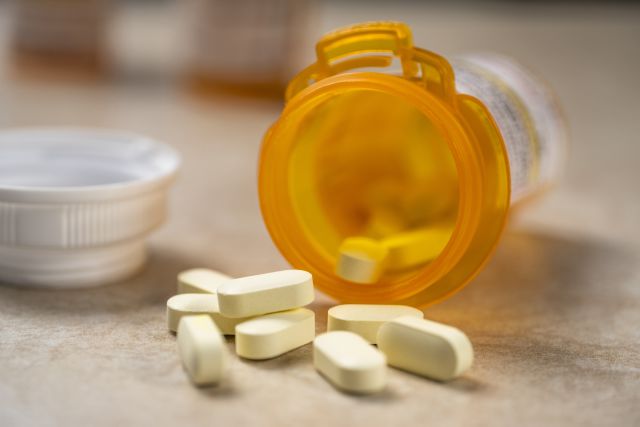Updated on February 16, 2024.
Emergency rooms across the country are seeing an increase in opioid overdoses (ODs). In 2021, opioids killed 80,411 people in the United States, and increase from the 68,630 reported deaths in 2020.
John Cunha, DO, an emergency medicine specialist with Holy Cross Health in Fort Lauderdale, Florida, says the majority of opioid overdoses he and his colleagues see in the emergency department (ED) are accidental. Some are related to prescription opioid painkillers such as Percocet, Vicodin, and OxyContin, while many stem from illegal drugs, such as heroin and fentanyl.
“There is a lot of variability in heroin that is sold on the street,” Dr. Cunha says. “And fentanyl, an opioid between 30 to 50 times stronger than heroin, is also responsible for a lot of overdoses. When people buy heroin, it’s often laced with fentanyl.”
Cunha says opioid overdoses can happen to anyone. He’s treated older people who have become addicted to prescription painkillers and children who have overdosed after accidentally ingesting their parents’ medications. A report published in the March 2018 issue of the medical journal Pediatrics found the number of children admitted to intensive care units for opioid poisoning nearly doubled between 2004 and 2015. This includes teens who may have ingested opioids for recreational purposes and even toddlers who mistakenly believed their parents’ pills were candy.
The effects of opioids on your body
When a person first takes an opioid, either by pill or injection, the drug spreads through the body, Cunha says. When it hits the brain, it increases the amount of a neurotransmitter called dopamine. This offers a feeling of pleasure and blocks the sensation of pain.
While this is happening, the brain causes certain bodily functions such as heart rate and breathing to slow down. During an overdose—when your body can't handle the amount of opioids you've taken—these functions slow to the point it becomes life-threatening. This affects a person in many different, often observable ways, including:
Breathing problems: While opiates in general cause breathing to become shallow and slow, during an overdose, Cunha says a person may cease breathing altogether. This can result in brain damage, a coma, or death by respiratory failure. When people die of an OD, it's because they become unable to breathe on their own.
Constricted pupils: “Those who are experiencing an opioid overdose also exhibit pinpoint pupils, where the pupils in their eyes appear to be unusually small under normal lighting,” Cunha says.
Unconsciousness: “Opiates slow the central nervous system and a person may become unresponsive or unconscious,” says Cunha. Along with breathing problems and pinpoint pupils, blacking out is part of the "opioid triad"—three telltale signs someone is overdosing.
Changes in skin tone: Due to lack of oxygen, someone having an overdose may exhibit bluish lips and fingernails, as well as pale or blue skin, which can also be cold to the touch. In people with dark skin tones, skin may seem gray or ashen.
Unfamiliar sounds while sleeping: It’s not unusual for opiate use to cause nausea, Cunha says, but if a person vomits while they are dozing, they may choke. If a sleeping person is making choking, snoring, or gurgling noises (sometimes called a "death rattle") and isn't responsive when you try to wake them, they could be overdosing.
Confusion and delirium: In some cases, an opioid overdose can lead to disorientation and cognitive impairment. Cunha says these symptoms can manifest as confusion, hallucinations, or agitation.
In the event of an overdose
Knowing the signs of an opioid OD can help save lives. If you suspect a loved one has overdosed, Cunha says it’s critical to call 911 immediately.
“An opioid overdose can be reversed if the medication naloxone is administered quickly,” he says. “Often given by first responders and ED staff as a nasal spray (Narcan) or injection, it can prevent brain damage in patients by restoring breathing function.” Once an overdosing person is able to breathe normally, they usually recover, though they still need emergency help for side effects that mirror opioid withdrawal symptoms, such as nausea and vomiting, fever, sweating, and shivering.
Naloxone is increasingly available where people are likely to overdose, including schools, libraries, and homes. In some states, pharmacies offer it with no prescription as part of an outpatient program and in many cities and communities, it is available for free from vending machines.
When your loved one needs help
Because opioids are highly addictive, they can lead to higher tolerances, Cunha says. This can result in people needing a bigger dosage to manage pain, or lead them to inadvertently mix opioids with other medications, increasing the risk of overdose. Opioids can be especially dangerous when combined with benzodiazepine medications used for anxiety and insomnia, since both suppress breathing. These include diazepam (Valium) and alprazolam (Xanax), among others. Adding alcohol to the mix makes the danger of overdose even greater.
“The more narcotics a person needs to chase pain, the higher the risk of overdosing,” Cunha says. “I advise patients to avail themselves to good pain management programs and clinics to learn how to manage pain without narcotics, rather than to indefinitely continue relying on opioid medications.”
Speak with a healthcare provider about your options for pain management. If you suspect you or a loved one may have a problem with opioids, the Substance Abuse and Mental Health Services Administration (SAMHSA), offers a free 24-hour helpline, 1-800-662-4357, providing referrals to local treatment facilities.







